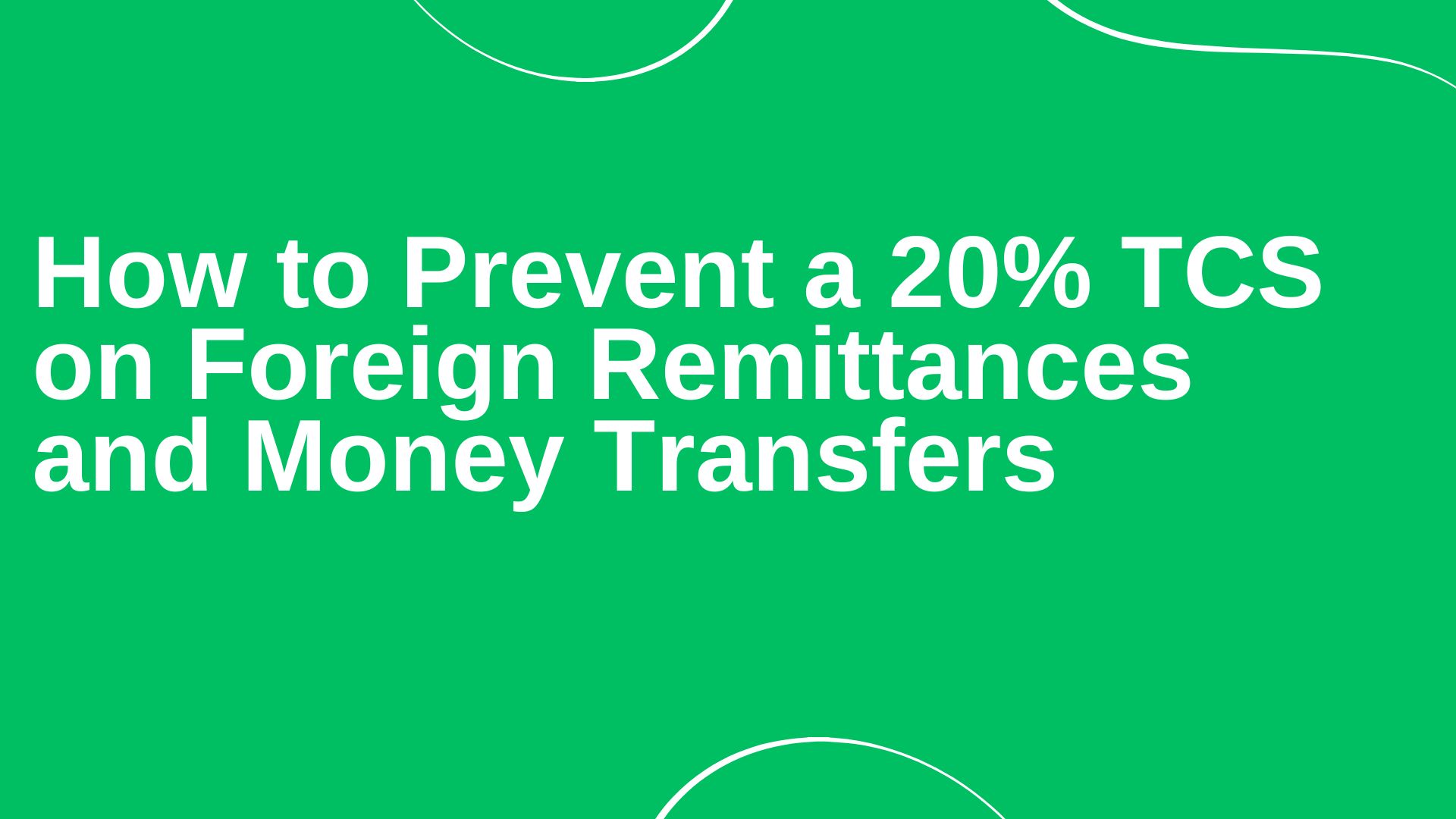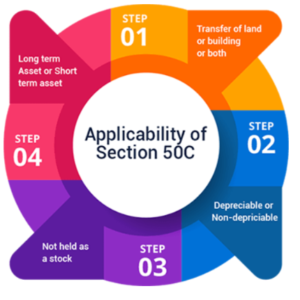Did you know the Indian government revised its tax policies effective October 1, 2023?
The tax on foreign remittances has increased from 5% to 20%, a change that has significantly affected Indian residents sending money abroad for purposes like vacations, education, or gifts. This sharp increase in taxes comes amidst a 7.8% depreciation of the rupee over the past year, making the financial burden even heavier.
This policy shift has broader implications for the Indian economy, increasing the cost of imports, contributing to inflation, and widening the trade deficit.
The primary objective of this change is to curb tax avoidance by wealthy individuals transferring money overseas.
You can reduce the tax impact through the following strategies:
Transfer Below ₹7 Lakh: Avoid high TCS rates by limiting your foreign remittance to less than ₹7 lakh.
Medical and Educational Expenses: When sending money for education or medical treatment, TCS is just 0.5% beyond the ₹7 lakh threshold if paid through an educational loan.
Utilize NRI Accounts: If you have an NRI account, use it for remittances, as these accounts are exempt from TCS on foreign transfers.
Understanding TCS on Foreign Remittance Transactions
TCS, or “Tax Collected at Source,” is a tax imposed by the authorized dealer or bank facilitating international money transfers. This provision is designed to monitor foreign remittances, link them to the income tax returns of the individuals making these transfers, and help prevent tax evasion.
To illustrate, consider the following example:
Mr. Sharma plans to send INR 10 lakhs to his daughter, who is pursuing her education in the United States. Under the updated TCS regulations effective October 1, 2023:
No TCS is applicable on the first INR 7 lakhs of the remittance since it falls within the exempted threshold.
For the remaining INR 3 lakhs:
If the remittance is made using an education loan, the applicable TCS rate is 0.5%. This means Mr. Sharma would pay an additional INR 1,500 (0.5% of INR 3 lakhs) as TCS.
If not using a loan, the TCS rate increases to 5%, requiring Mr. Sharma to pay an additional INR 15,000 (5% of INR 3 lakhs) as TCS.
Depending on the funding source, Mr. Sharma’s total remittance amount would be:
INR 10,01,500 (with an education loan), or
INR 10,15,000 (without an education loan).
This example highlights how TCS rates and rules vary based on the purpose of remittance and other factors. Next, let’s explore the applicable TCS rates for foreign remittances categorized by their purpose.
Before the Union Budget of 2023, any foreign remittance under the Liberalised Remittance Scheme (LRS) exceeding ₹7 lakhs was subject to a 5% Tax Collection at Source (TCS). However, in the budget, Finance Minister Mrs. Nirmala Sitharaman proposed increasing this rate to 20%. On October 1, 2023, the new rates officially came into effect.
From this date onwards, a 20% TCS applies to all foreign remittance transactions, including investments, shopping, and purchasing overseas travel packages. The only exception is for international money transfers specifically made for travel or medical expenses.
Effective from October 1, 2023, the new TCS (Tax Collected at Source) rates for overseas outward remittances are as follows:
TCS Rates for Overseas Outward Remittances (excluding medical and educational purposes)
Remittances below INR 7 Lakhs: Nil
Remittances of INR 7 Lakhs or more: 20%
TCS Rates for Education Remittances
Remittances below INR 7 Lakhs for education: Nil
Remittances of INR 7 Lakhs or more for education through loan: 0.5%
Remittances of INR 7 Lakhs or more for education not through loan: 5%
TCS Rates for Medical Remittances
Remittances below INR 7 Lakhs for medical purposes: Nil
Remittances of INR 7 Lakhs or more for medical purposes: 5%
TCS Rates for Overseas Packages
Remittances below INR 7 Lakhs for overseas packages: 5%
Remittances of INR 7 Lakhs or more for overseas packages: 20%
TCS Rates for Overseas Investments
Remittances below INR 7 Lakhs for overseas investments: Nil
Remittances of INR 7 Lakhs or more for overseas investments: 20%
Important Notes:
Regardless of the purpose of the remittance, TCS will apply once the aggregate threshold of INR 7 lakhs is crossed.
Different TCS rates will be applied depending on the purpose of the remittance once this threshold is exceeded.
Debit or forex card payments fall under the Liberalized Remittance Scheme (LRS). Only international credit card payments are exempt from TCS.
To avoid paying the 20% Tax Collection at Source (TCS) on foreign remittances and money transfers, consider the following:
Remittances Below INR 7 Lakh
You won’t be required to pay TCS on money transfers abroad if the amount is below INR 7 lakh. Keep your transfers under this threshold to avoid the 20% TCS. Note that to qualify for this exemption, the total amount you remit in a financial year must not exceed INR 7 lakh. This approach can be used regardless of the reason for sending money overseas or the method of transfer.
For education or medical treatment purposes, you won’t have to pay the 20% Tax Collected at Source (TCS) on money sent abroad. The TCS rate for these transactions is much lower under the new TCS regulations for overseas remittances, effective from October 1, 2023.
To avoid TCS when sending money abroad for your loved ones’ education or medical treatment, you can:
Send amounts below INR 7 lakh to entirely escape the TCS.
Alternatively, you can consider these options to minimize the TCS rate:
For education purposes, if you send money above INR 7 lakh, using a loan to fund it will reduce the TCS to 0.5%. Without a loan, the TCS will be 5%.
For medical treatment purposes, sending money above INR 7 lakh will attract a 5% TCS.
You can transfer money abroad using your international credit card to avoid the 20% TCS on Foreign Remittances. These transactions do not fall under the Liberalised Remittance Scheme (LRS), making them exempt from TCS. This exemption applies as long as the amount does not exceed INR 7 lakh in a financial year.
However, keep in mind that credit cards may eventually be included under the Liberalised Remittance Scheme (LRS), which means you would need to pay TCS when making international transfers using them in the future. Initially, the Finance Ministry had included credit cards in the LRS, but the government postponed this, as per its e-gazette notification dated 16th May 2023, to allow banks and card networks sufficient time to implement the necessary IT solutions.
Utilize a Non-Resident Indian (NRI) Account
An NRI account is a bank account opened in India in the name of a Non-Resident Indian (NRI). It is typically used to manage earnings from India. According to the Income Tax Act, if you transfer money using an NRI account to your non-residential external (NRE) or foreign accounts, TCS will not apply.
This means that NRIs can easily transfer their Indian earnings—such as pensions, dividends, salaries, rents, profits from repatriable enterprises, or distributions from deposits—without being subject to TCS.
Additionally, Forex dealers may waive TCS on remittances when you transfer money through them.
Avoid Trip Packaging
To prevent additional charges, avoid purchasing a packaged overseas tour if its cost exceeds INR 7 lakh, as it incurs a 5% TCS. Beyond this threshold, a 20% TCS on foreign remittances and money transfers comes into play. Opt for separate bookings and payments to sidestep this tax. For instance, booking your international flights, accommodations, and other expenses individually can help you avoid TCS, provided the transaction is made with a company operating within India. However, if you make payments in a foreign currency while in India for flights and hotel reservations, TCS regulations will apply.
Consider a Zero Forex International Debit Card
A zero forex international debit card, issued by banks, enables foreign currency transactions without the typical foreign exchange fees. Using such a card can help you avoid the TCS on foreign remittances exceeding INR 7 lakh in a financial year, as per Indian tax regulations.
Keep in mind that while these cards offer considerable advantages, they may also come with certain limitations or fees, such as ATM withdrawal or annual charges. It’s important to review the terms and conditions and understand the fee structure before acquiring one.
What’s the Difference Between TCS and TDS?
Meaning
TDS (Tax Deducted at Source): The government collects this tax from the income you earn.
TCS (Tax Collected at Source): This tax is collected by the government when you pay for certain imported goods or services.
Application
TDS: Applies to different kinds of income or services, like rent, commission, interest, salaries, and brokerage.
TCS: Only applies to specific imported goods or services, such as toll tickets, forest products, cars, tendu leaves, minerals, liquor, timber, and scrap.
Liability
TDS: The person or company making the payment is responsible for deducting and paying this tax.
TCS: The person or business selling the goods or services is responsible for collecting this tax.
Certificates
TDS: There are two main types of certificates – Form 16 and Form 16A, given to those who deduct tax from payments.
TCS: There is one certificate, Form 27D, given to the buyer of the goods.
Regulations
TDS: Governed by the Income Tax Act, 1961.
TCS: Governed by the Finance Act, 1994.
Examples of TDS and TCS:
TDS: Imagine you’re working at a company with an annual salary of INR 6,00,000. According to Indian tax laws, if your salary exceeds INR 2,50,000 per year, your employer must deduct TDS. The deduction rate is based on your income tax slab; let’s say it’s 10% for simplicity. This means your employer will deduct INR 60,000 (10% of INR 6,00,000) as TDS, leaving you with a net salary of INR 5,40,000 for the year.
TCS: Now, suppose you purchase a car for INR 12,00,000 from a dealer. Indian tax laws require the seller to collect TCS if the car’s value is over INR 10,00,000. The TCS rate for a car is 1%. Therefore, the dealer will collect INR 12,000 (1% of INR 12,00,000) as TCS. Consequently, you’ll pay a total of INR 12,12,000 to the dealer (INR 12,00,000 for the car plus INR 12,000 as TCS).
Need Help?
FAQs
What is TCS on foreign remittance?
TCS (Tax Collected at Source) is a fee charged by the bank or authorized dealer when you send money abroad.
Who can get a TCS refund?
You can get a TCS refund if:
- The total TCS you’ve paid is more than your tax liability for the year.
- You’ve filed your Income Tax Return (ITR) on time.
- You have documents like bank statements and forex card statements to support your remittances.
- You’ve provided accurate information in your ITR.
How do I claim TCS when filing an ITR?
To claim TCS while filing your ITR, follow these steps:
- Gather necessary documents, like the TCS certificate (Form 27D).
- Check Form 26AS for a summary of taxes deducted on your behalf.
- File your ITR.
- If you’ve paid more TCS than your tax liability, claim a refund by filling out the relevant sections of the ITR form and attaching supporting documents.
How much money can you send abroad under LRS annually?
Under the Liberalised Remittance Scheme (LRS), you can send up to USD 250,000 (INR 20,682,750) per financial year (April-March). If you need to send more, you must seek approval from the RBI.
How can I avoid 20% TCS on foreign remittances?
To avoid paying 20% TCS on foreign remittances, consider these options:
- Exemptions: Some remittances, like those for education loans or medical treatment, may qualify for lower TCS rates or exemptions.
- Form 15CA/CB: Submit these forms if the remittance is not taxable to potentially avoid TCS.
- Lower TCS Rates: Under LRS, a 5% TCS applies for education or medical treatment if certain conditions are met.
Is it possible to avoid TCS on foreign remittances?
Avoiding TCS may not be entirely possible unless:
- Your transaction is exempt (e.g., for medical treatment or education within certain limits).
- You provide relevant documentation, like Form 15CA/15CB, to show the remittance isn’t taxable.
- Specific remittances, such as those for education or medical purposes, are eligible for a reduced TCS rate of 5% or 0.5%.
What is the TCS rate for foreign remittances?
- 20% TCS applies to most foreign remittances, except specific cases.
- 5% TCS applies to remittances for education or medical treatment under LRS if the amount exceeds ₹7 lakh.
- 0.5% TCS applies to education remittances funded by an educational loan.
Can I claim a refund of TCS on foreign remittance?
Yes, you can claim a TCS refund when filing your ITR if the TCS collected is more than your tax liability:
- Filing ITR: Report the TCS paid in your ITR.
- TCS Credit: TCS will appear in your Form 26AS and can be claimed as a tax credit.
Refund Process: If total taxes paid, including TCS, exceed your liability, the surplus can be refunded after your ITR is processed.
How to reduce TCS on foreign remittance?
To minimize TCS on foreign remittance:
- Check Purpose: Ensure the remittance qualifies for lower TCS rates.
- Use Exemptions: Identify any applicable exemptions or thresholds.
- Consider Amount Limits: Smaller amounts might not incur TCS.
- Tax Planning: Claim TCS as a refund in your ITR.
- Consult a Tax Advisor: Seek professional advice for your specific situation.
Table of Contents
Toggle


